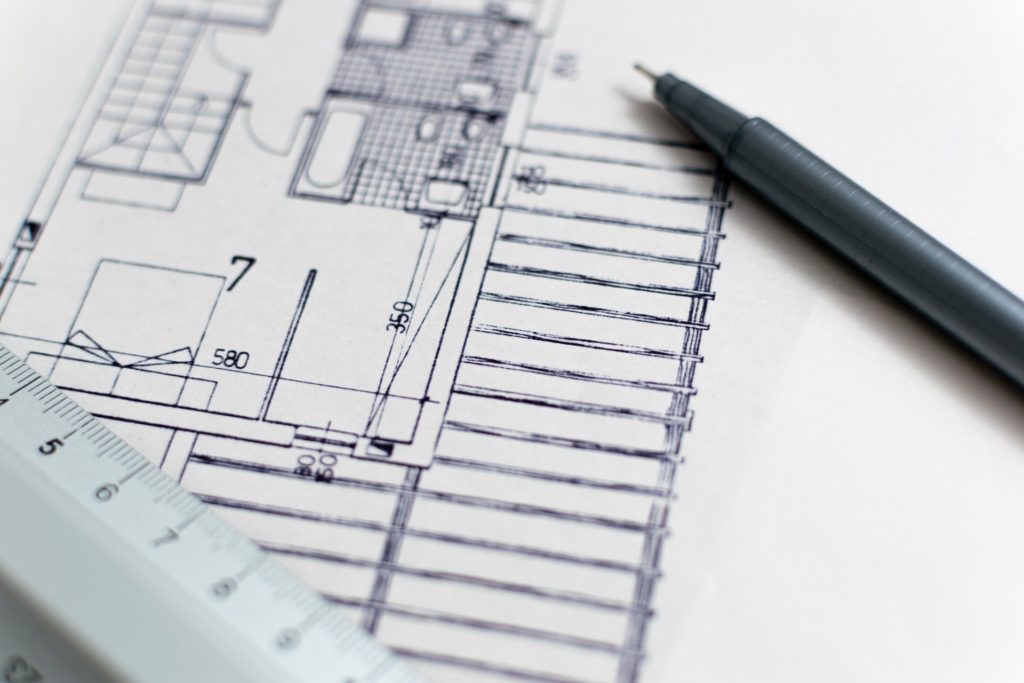The global campaign to save our planet is underway and the starting gun for the Race to Zero has been fired, which means that countries such as the UK have committed to achieve net zero emissions by 2050 at the very latest.
Net zero entails achieving a balance between the amount of greenhouse gas emissions produced and the amount removed from the atmosphere.
In 2018, the UK’s emissions stood at 57% of their 1990 levels. However, in 2019 the UK pledged to reach net zero by 2050, which commits the country to reducing emissions to 100% of their 1990 levels. The pressure is now on all industries to do their part to lessen their environmental impact.
Construction and the environment
Construction is a key player in the race against further climate change. Around the world, the sector uses 32% of the world’s natural resources, making it an area of importance in the race towards lower carbon emissions.
The design phase of construction is just as important as the actual building of structures, as this can have a huge impact on the long-term carbon impact of a built environment.
This environment, which encompasses the whole lifecycle of a built structure, is responsible for around 30% of the world’s total greenhouse gas emissions. In the UK, CO2 emissions from the built environment represent 45% of our total carbon footprint, adding up to a staggering 246 million tonnes. This makes it the country’s largest contributor to CO2.
As a result, changes to traditional design and construction could lead to huge strides in reducing the sector’s impact on the environment and positively contributing towards emission cuts.
How can construction companies reduce their carbon footprint?
Construction companies have a huge scope when it comes to taking control of their environmental impact and making changes to reduce it.
Here are just some ways in which your construction business can contribute in the race to net zero.
 1. Design
1. Design
If your construction company is at all involved in the design of buildings, you can make changes that could have a positive long-term impact on its lifetime of carbon emissions.
Think about:
- Insulation – can more be provided?
- Energy – can solar or wind power be incorporated into the design to reduce the buildings’ energy usage?
- Can environmentally unfriendly materials such as concrete be reduced or replaced?
- Can existing trees and other aspects of the natural landscape be incorporated into the proposed site?
If there are existing structures on the proposed site, it may also be worth investigating whether these can be re-used rather than knocked down and replaced. According to the report ‘New Tricks with Old Bricks’ by the EHA (Empty Homes Association) and BSHF (Building and Social Housing Foundation), re-using empty homes could save 35 tonnes of CO2 per house.
2. Energy management
Adopting best-practice energy management on site can have a crucial impact – and it can also save your construction business money. According to the CIOB’s (Chartered Institute of Building) report, ‘Reducing the Footprint of the Construction Process’, making energy management on site more efficient could lead to an annual reduction in carbon of 28,000 tonnes.
- Monitoring – introduce regular monitoring and analysis of energy usage on site to highlight potential savings.
- Connection – work towards connecting the site to local sources of energy or the National Grid as soon as possible to reduce the need for emission-heavy generators.
- Accommodation – making site accommodation more efficient and energy-saving could lead to an annual reduction of 200,000 tonnes of carbon, so investigate what alternatives you could use on site.
- Head office – energy savings can also be made at the head office. See if you can switch to renewable energy suppliers or energy-saving lighting.
For more ideas on what you can do at your head office to create a more environmentally friendly business, take a look at our article.
3. Transport
The transport of equipment and materials to and from site is inevitable within the construction industry, but there are carbon-saving measures that can be employed to great effect. Indeed, fuel-efficient freight driving and the use of renewable-energy transport could lead to a carbon saving of 180,000 tonnes a year.
- Green alternatives – can some, or all, or your business’ transportation be switched to greener alternatives, such as hybrid or electric vehicles?
- Planning – organise your deliveries so that more materials are transported with fewer journeys or look to see if several sites can be serviced from one delivery.
- Look local – investigate local suppliers to see if journey times can be reduced.
- Training – provide your drivers with training to show them the benefits of fuel-efficient journeys.
 4. Waste management
4. Waste management
Reducing waste is an area of construction that can be easily achieved with huge carbon savings. According to the ‘Cutting embodied carbon in construction projects’ report by WRAP (Waste & Resources Action Programme), on-site construction waste can account for up to 15% of the embodied carbon in a building.
- Coordination – see if you can coordinate projects so that surplus material on site can be used on another, which will also save you money.
- Packaging – investigate reusable or recyclable alternatives.
- Training – train your staff to raise their awareness of recycling measures and other waste-saving initiatives to drive good waste management across site.
- Off-site construction – moving some construction off-site can have a significant impact, potentially saving more than half of the embodied carbon produced by on-site construction waste.
Adopting a long-term strategy with ISO 14001
In our environment report published in 2019, we revealed the importance of a long-term strategy for creating significant change when it comes to reducing the environmental impact of a business.
By implementing a long-term strategy, businesses can align environmental aims alongside their usual business goals, ensuring that environmental aspects are fully integrated within the business to drive improvement forward.
One way of doing this is by implementing ISO 14001, the international Standard for environmental management.
Designed by the ISO (International Organisation of Standardisation), ISO 14001 can help businesses to reduce their environmental impact by creating a framework of processes that help to quantify, monitor and control their environmental impact.
With such a system of processes in place, businesses can:
- Reduce waste
- Improve resource efficiency
- Cut waste management costs
- Stay up to date with the latest legislation and regulations
- Improve their company’s reputation
- Pre-qualify for some tenders
- Continually improve operations for reduced environmental effects
If you would like to know more about ISO 14001, you can take a look at our dedicated webpage. You can also get in touch with us on 0333 344 3646 or by emailing sales@qmsuk.com.

